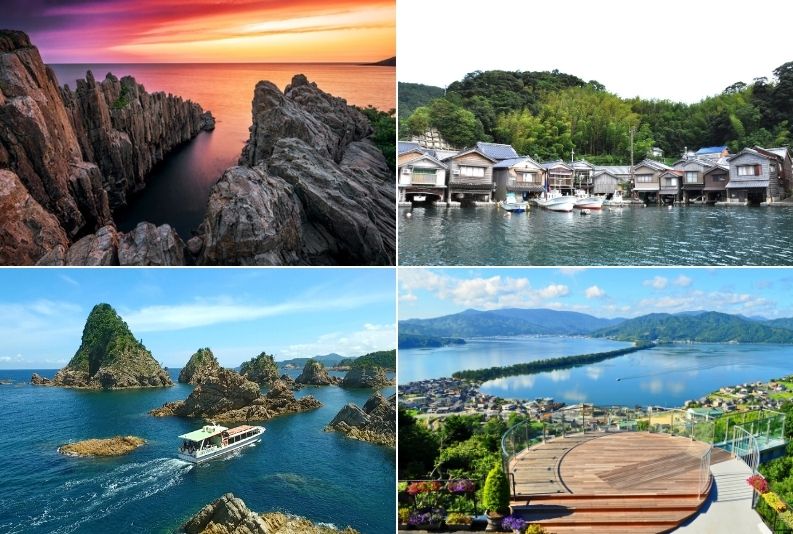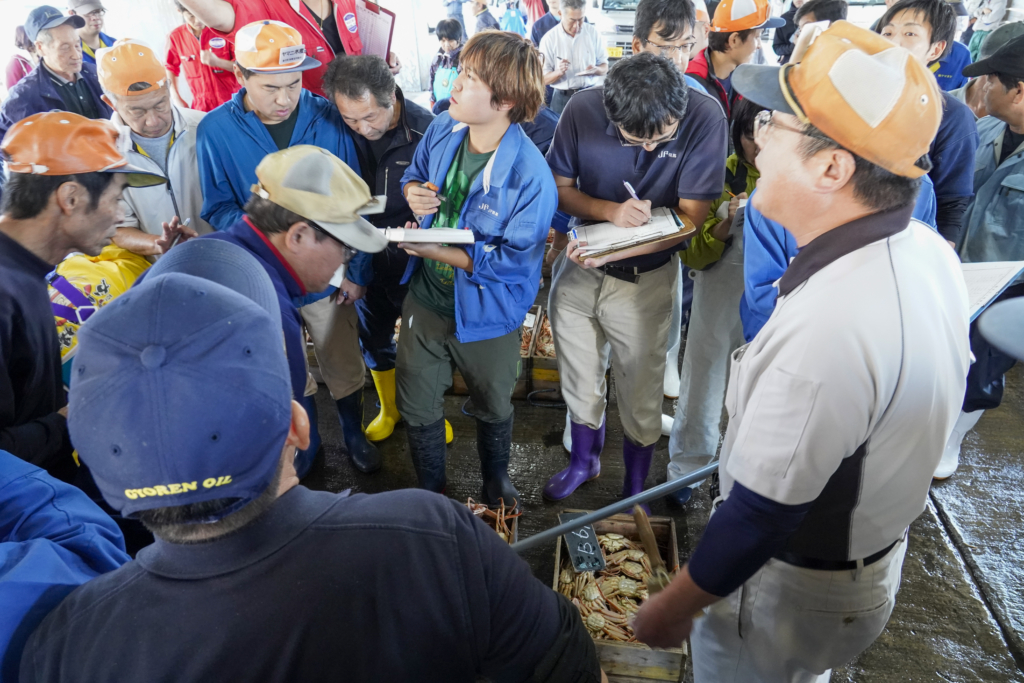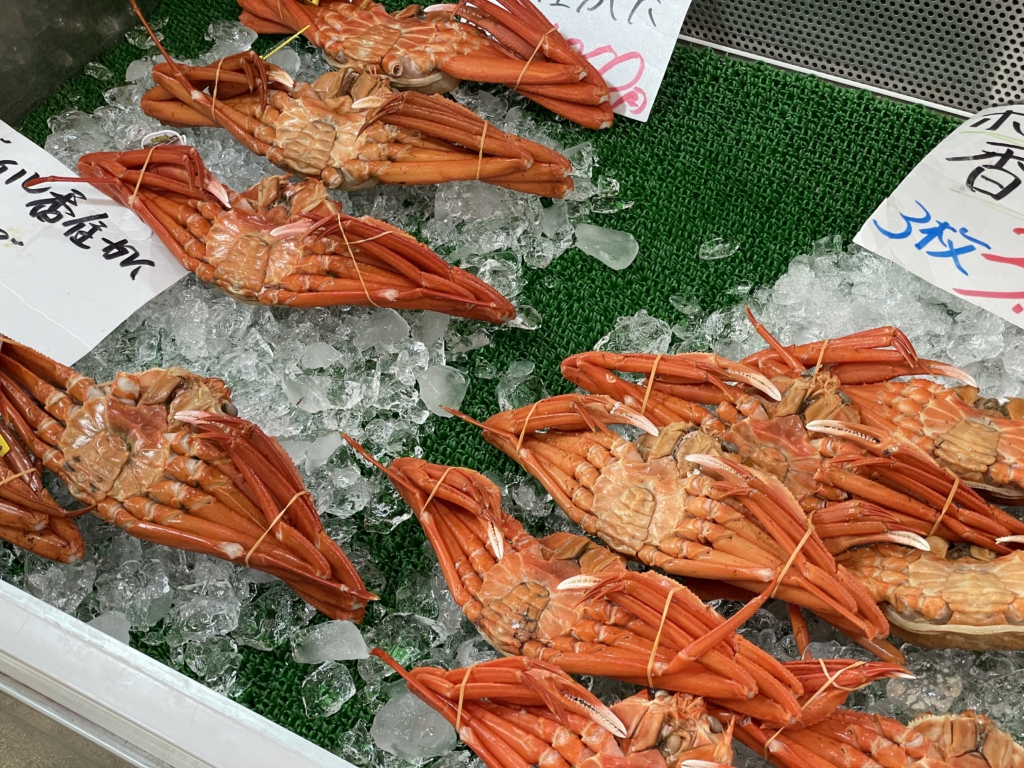1. Tojinbo (Fukui) – Gaze Upon Geometric Precipitous Cliffs
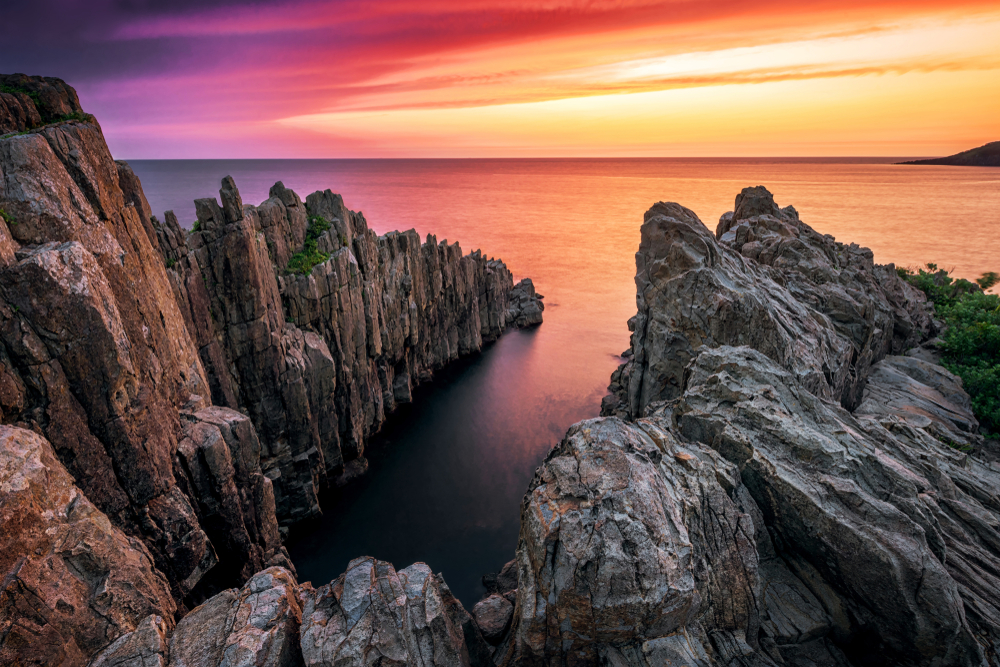
The Tojinbo cliffs are precipitous basalt cliffs with stunning views that overlook the Sea of Japan.
It is believed that the name for the cliffs comes from an ancient warrior monk called “Tojinbo” who supposedly fell to his death at the cliffs. He was known as an evil tyrant, and whether he was pushed off the cliff by angry townspeople or by a romantic rival, it is said that for 49 days after his death (the mourning period after death in Buddhism), the sea became rough due to his remorse. After this inauspicious event, the cliffs were thus known as Tojinbo.
The columnar geometric rock formations are made of pyroxene andesite, a type of crystallized volcanic rock. Tojinbo is only one of three places in the world where you can see such rock formations, the other places being Norway and North Korea. You can view these rocks right up close by following trails, and the daring can even make their way right up to the edge of the cliffs! It is a spectacular experience being able to gaze out upon the ocean and sky without interruptions from busy tourists. For a more comprehensive view, there are also sightseeing boats that glide by the Tojinbo cliffs, though they do not run when the waters are particularly rough.
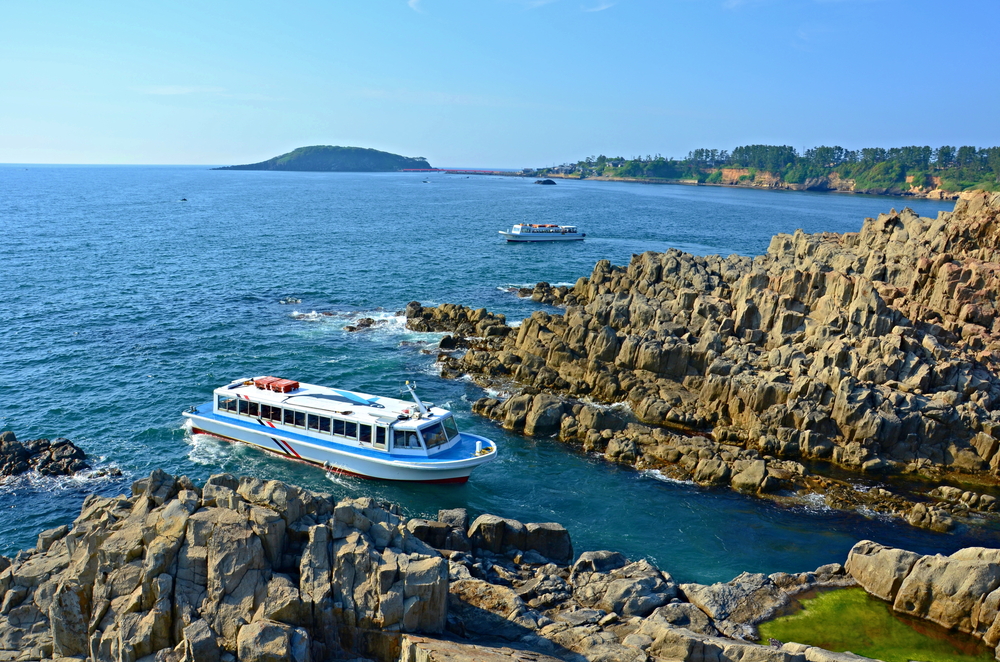
When you have explored every nook and cranny of the fascinating rock formations, you can head over to the nearby Tojinbo Shopping Street lined with shops, cafes, and restaurants to buy some souvenirs or indulge on local treats. Fukui is particularly known for its crab, so don’t miss a chance to try nationally-renowned crab! Sunset at Tojinbo is known to be particularly spectacular – be sure to try and catch a glimpse of the stunning sight of the sun setting behind the Sea of Japan, setting the sky ablaze!
| Name | Tojinbo | |
| Address | Mikunicho Anto, Sakai-shi, Fukui 福井県坂井市三国町安島 Google Maps | |
| Access | Take the JR Limited Express Thunderbird bound for Kanazawa from Osaka Station or Kyoto Station and disembark at Awara Onsen Station. About a 20-minute taxi ride from Awara Onsen Station. |
2. Amanohashidate (Kyoto) – View Japan’s “Bridge to Heaven”
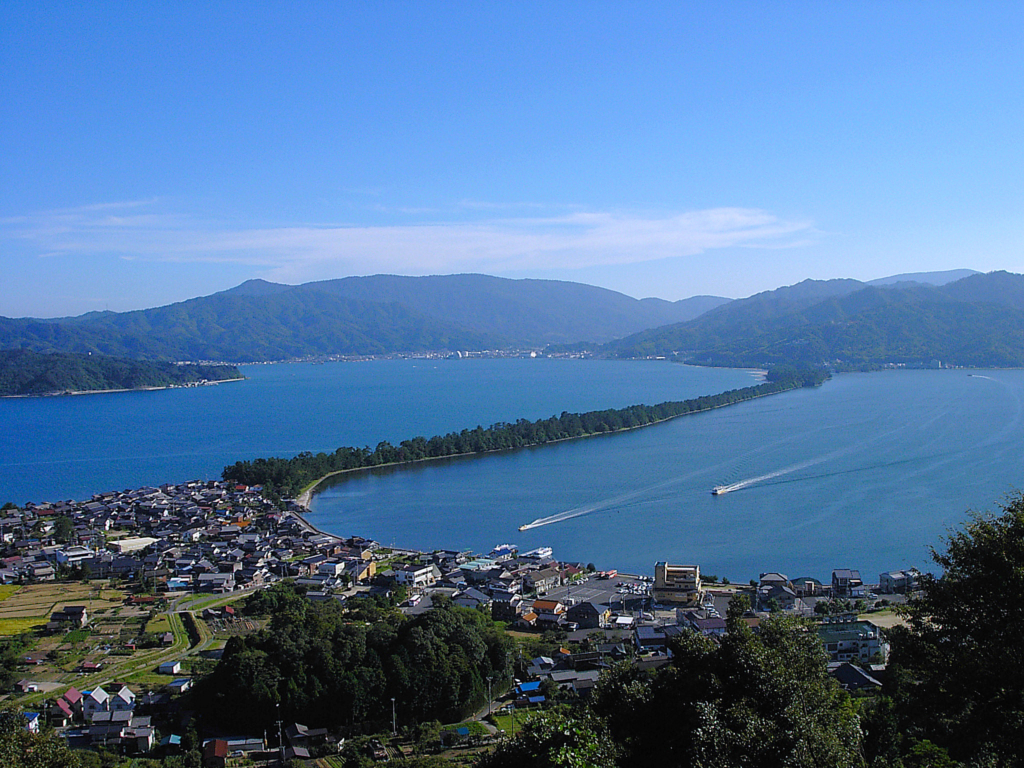
Amanohashidate is a sandbar in Kyoto Prefecture that has been designated as one of the “Nihon Sankei,” or Japan’s three most scenic views. The sandbar is lined with thousands of pine trees and separates the Sea of Japan and Miyazu Bay.
The name “Amanohashidate” is derived from its appearance as a divine bridge, the name roughly translating to “bridge to heaven.” Amanohashidate and the surrounding area played a significant part in politics and culture, and the nearby Mt. Nariai was considered particularly spiritual, in part due to its breathtaking view of Amanohashidate. In the 8th century, Nariai Temple on Mt. Nariai was even designated as the location where Emperor Monmu, the 42nd emperor of Japan, would conduct his worship.
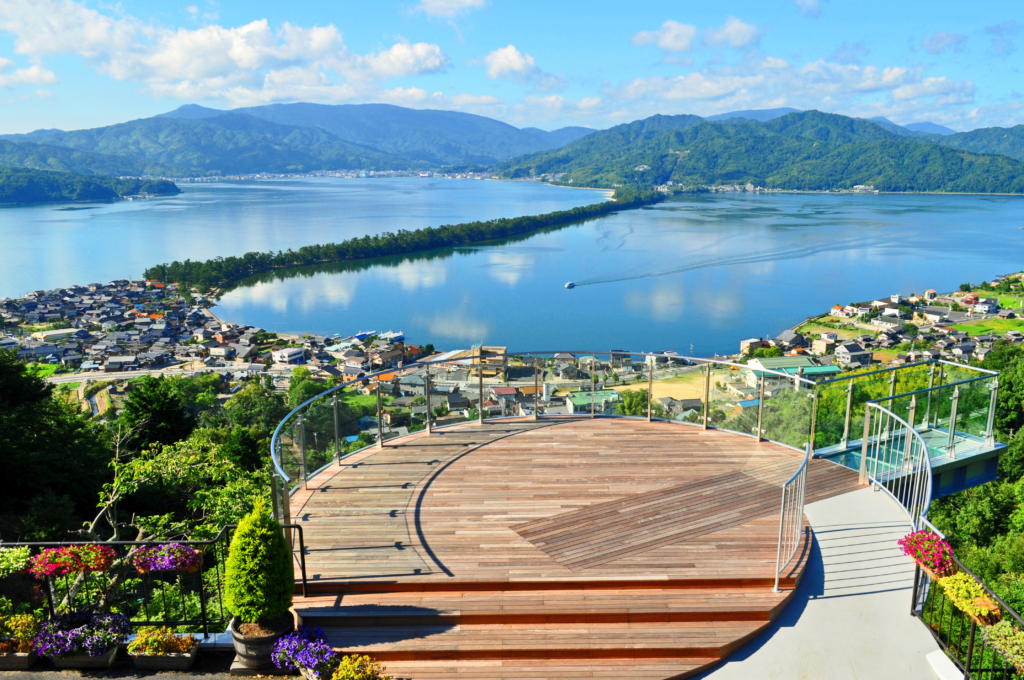
There are plenty of ways to spend your time at Amanohashidate, whether it be relaxing on the beach by the pine trees, exploring by foot or bicycle, enjoying a ride on a sightseeing boat and viewing the sandbar from the water, or taking in an overhead view of the spectacular scenery. One of the best places to get a panoramic view of Amanohashidate is Kasamatsu Park, an observatory halfway up Mt. Nariai that offers sweeping scenery of the water and surrounding area. It is recommended to bend over and get a look at Amanohashidate through your legs – it appears as if it is a bridge to heaven! This position even has a name in Japanese – “matanozoki,” or “peering through the thighs.”
There are also charming towns on both sides of Amanohashidate, with Fuchu to the north and Monju to the south, both hosting shops and restaurants where you can recharge with some food and drink and buy some souvenirs to commemorate your trip to one of the three most beautiful places in Japan.
| Name | Amanohashidate |
| Address | Miyazu-shi, Kyoto 京都府宮津市 Google Maps |
| Access | Take the JR Limited Express Hashidate from JR Kyoto Station to Amanohashidate Station. You can also take the JR Limited Express Kinosaki from JR Kyoto Station or the JR Kounotori Limited Express from JR Osaka Station and disembark at Fukuchiyama Station. Take the Limited Express Tango Relay from Fukuchiyama Station to Amanohashidate Station (2.5 hours). |
| Name | Kasamatsu Park |
| Address | 75, Ogaki, Miyazu-shi, Kyoto 京都府宮津市字大垣75 Google Maps |
| Access | Follow the directions above to Amanohashidate Station. From Amanohashidate Station take the Tankai bus to Amanohashidate Cable-ka bus stop (25 minutes). 2-minute walk from the bus stop to the cable car. OR Walk 5 minutes from Amanohashidate Station to Amanohashidate Sightseeing Boat Pier. Take the sightseeing boat to Ichinomiya Pier (12 minutes) and then walk 5 minutes to the cable car. |
3. The Ine Boathouses (Kyoto) – Experience Retro Japan in This Quaint Fishing Village
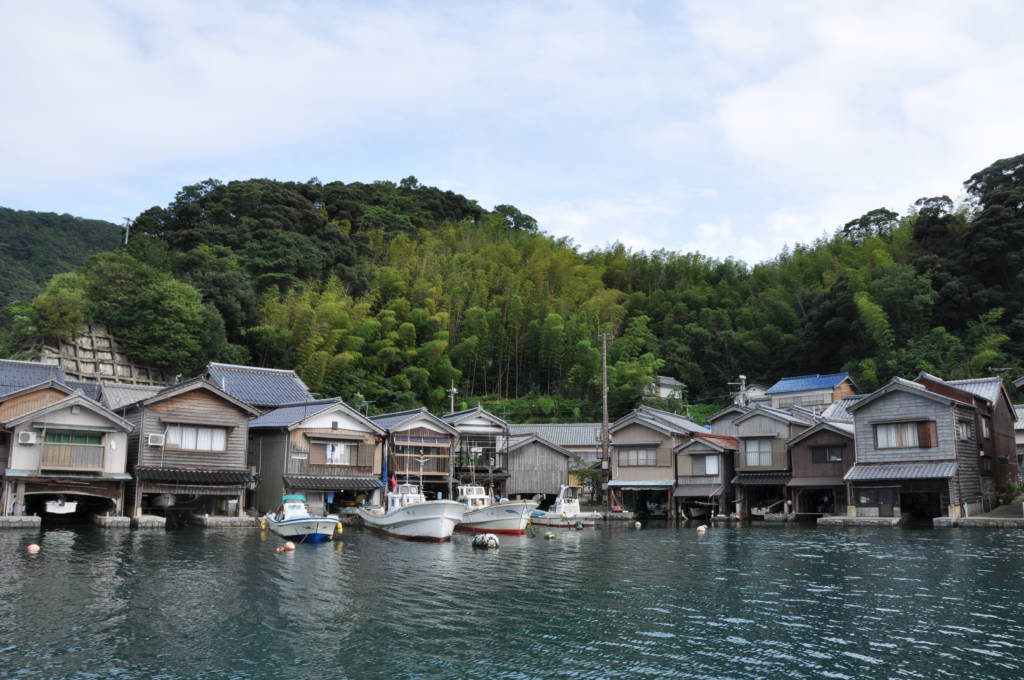
Located in northern Kyoto and only a 30-minute drive or 1-hour bus ride from Amanohashidate, Ine is a quaint fishing village situated on the Sea of Japan. The draw of this quiet village is without a doubt the Ine “funaya” (boathouses), quietly floating upon the water. It is a common sight to see fishing boats making their way across the water, and paired with the charming wooden houses in the background, it is no wonder that Ine is considered one of the most beautiful towns in Japan. The relative calmness of the Sea of Japan in this area means that nowhere else in Japan can you find so many funaya clustered together.
The funaya were originally simple garages for boats during the Edo period (1603 – 1868), and the townspeople would reside in houses built right across from the boathouses. This meant that the fishermen could easily leave their residences and head out to work, and this convenience has continued the tradition to this day.
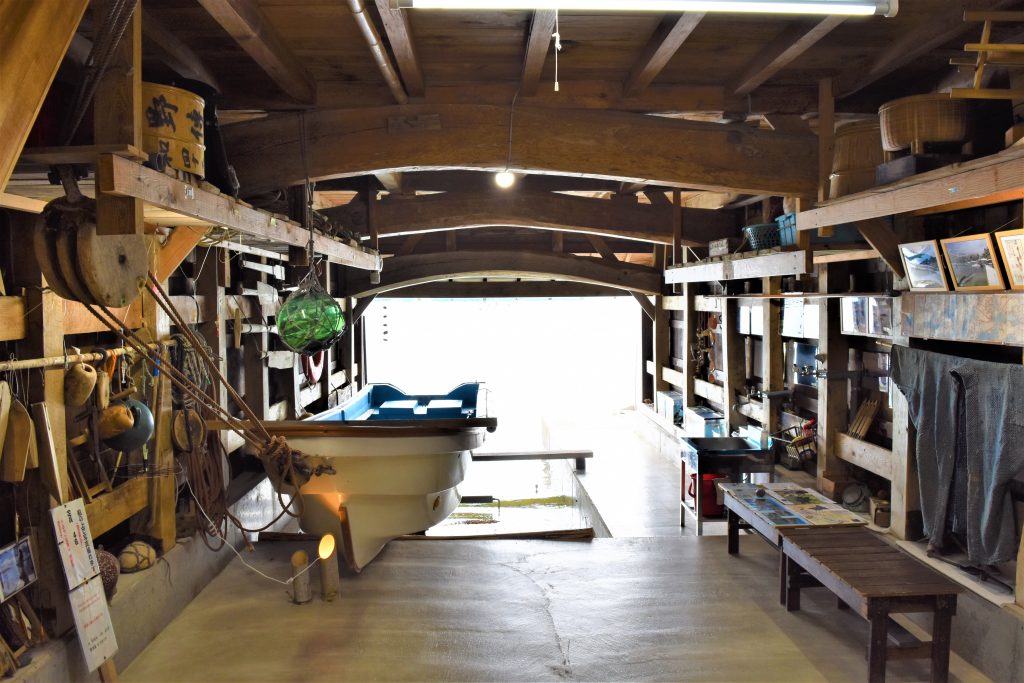
The townscape also has a retro Japanese atmosphere, the houses built with wood in traditional Japanese architectural styles. The wondrous traditional townscape has even gotten the Ine funaya designated as an Important Preservation District for Groups of Historic Buildings. Fully take in the scenery of Ine by leisurely walking through the traditional Japanese townscape, feasting on some fresh seafood while you’re there, or take a boat out onto the water to view the boathouses in all their glory.
You can tour the inside of one of the boathouses called Koyomaru, which houses a fishing boat and looks out onto the Sea of Japan, and there are even lodging facilities set up in some of the boathouses as well. Get a glimpse of the views the local fishermen see daily for yourself!
| Name | Ine Funaya Boathouses |
| Address | 77, Hirata, Ine-cho, Yoza-gun, Kyoto 京都府与謝郡伊根町平田77 Google Maps |
| Access | Follow the directions above to Amanohashidate Station. From Amanohashidate Station take the Tango Kairiku Kotsu bus bound for Ukawa Onsen Yoshino no Sato, Kamanyu, or Ine Yubinkyoku-mae, and disembark at Ine bus stop (1 hour). |
4. Kinosaki Onsen (Hyogo) – Soak Your Weary Bones at This Ancient Hot Springs Town
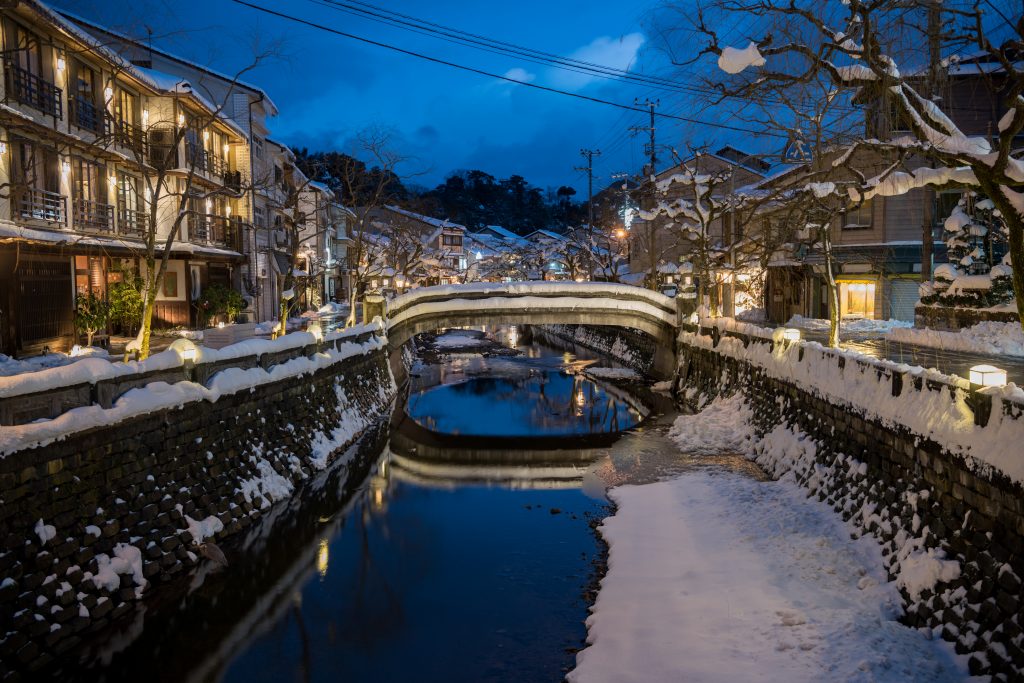
Kinosaki Onsen is a popular hot springs village nestled in a lush mountain valley that is situated on the coast of the Sea of Japan. The townscape is a treat to the eyes year-round, the traditional Japanese architecture complemented by the willow trees lining the river that turn green in the warmer months and are covered with lovely white snow during the colder months. It is one of the oldest hot springs towns in Japan, enticing visitors from all over the country and the world.
Hot springs were found in the Kinosaki area in the 8th century, and Kinosaki Onsen was founded in 720, meaning it has been serving visitors for over 1,300 years. Legend has it that the first onsen found in Kinosaki was produced after a priest traveling around the country to help the distressed and ill prayed for 1,000 days in order to ease the suffering of the locals after being instructed to by a local oracle. On the 1,000th day, hot springs bubbled forth, and thereafter became famous for their healing qualities.
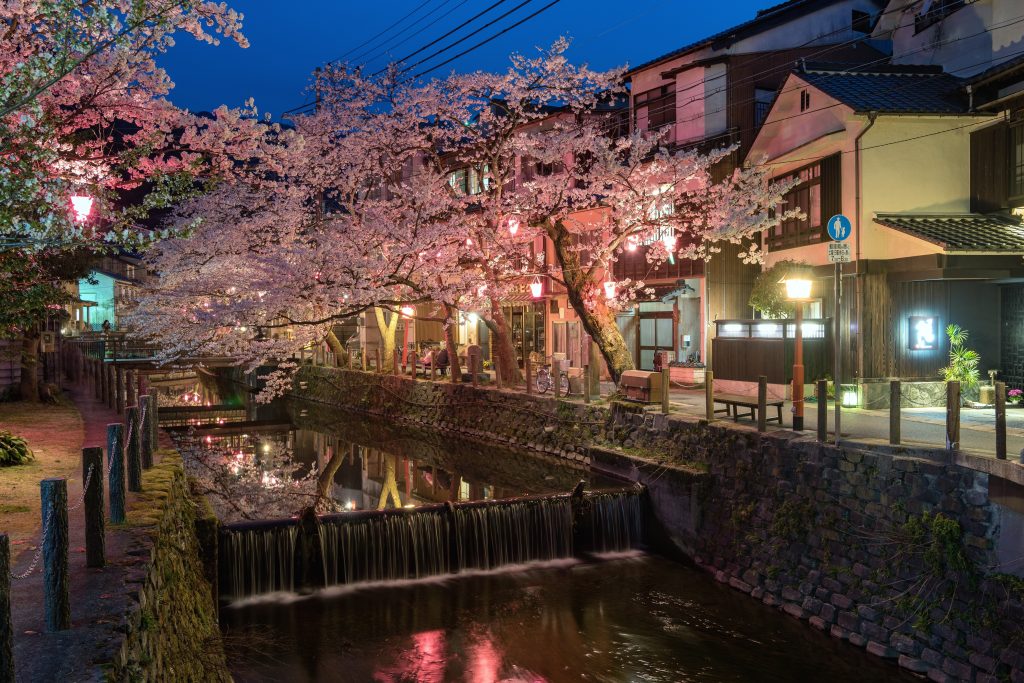
The hot spring town consists of seven onsen bathhouses, all conveniently located within walking distance of each other. It is a truly romantic sight seeing other guests walking through the streets in their yukata robes and geta sandals under the swaying willows and gentle nighttime illuminations. You can stay here for a couple of days to explore every corner of this charming onsen town, or you can make it a quick stop to relax as you continue on your journey.
The relaxing, mineral-rich hot spring waters are the perfect way to wash away the fatigue from an exciting journey across the Sea of Japan. Kinosaki Onsen is also tattoo-friendly, so inked visitors need not worry! The facility has also implemented several guidelines in response to the coronavirus, such as requiring masks, as well as frequent cleaning and air ventilation, so patrons can relax and enjoy their time at the onsen.
| Name | Kinosaki Onsen |
| Address | Yushima, Kinosaki-cho, Toyooka-shi, Hyogo 兵庫県豊岡市城崎町湯島 Google Maps |
| Access | Take the JR Kounotori Limited Express from JR Osaka Station, the Limited Express Hamakaze from Osaka, Sannomiya, Kobe, or Himeji Stations, or the JR Limited Express Kinosaki from Kyoto Station to Kinosaki Onsen Station. You can also take the JR Kounotori Limited Express From Fukuchiyama Station to Kinosaki Onsen Station (2.5 hours). |
5. Kasumi Fishing Port, Shibayama Port, and Tottori/Karo Port (Hyogo/Tottori) – Taste the Freshest Fish in Japan
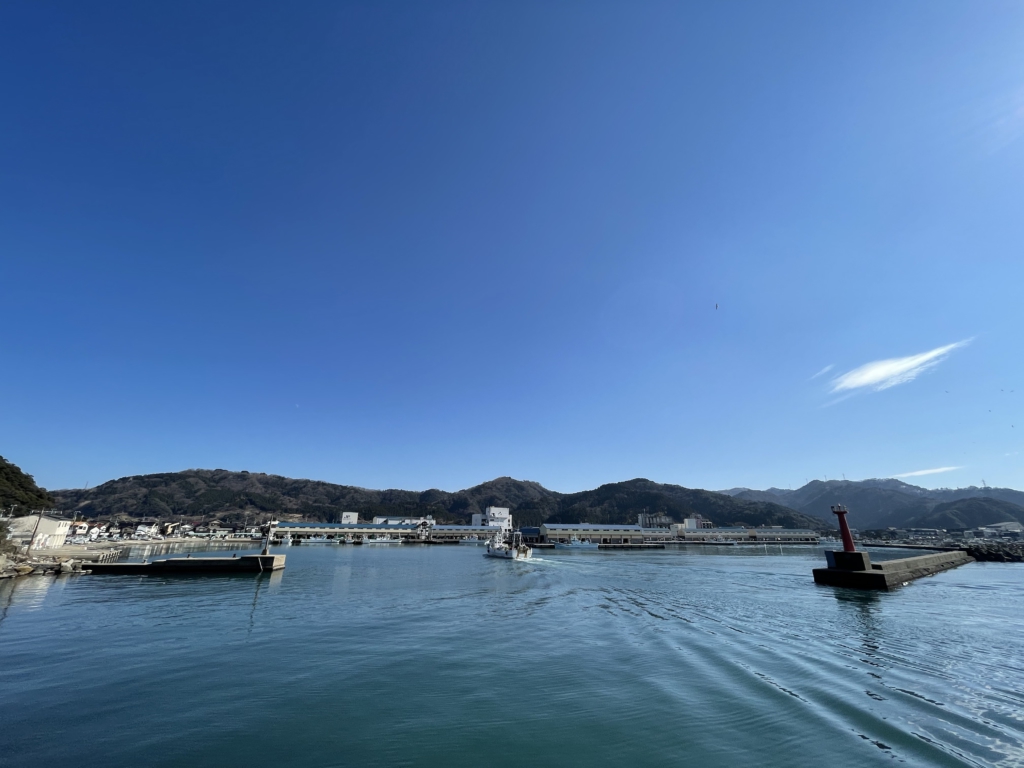
Kasumi, Shibayama, and Karo are all small fishing ports located directly on the Sea of Japan in northern Hyogo and Tottori Prefectures. Not only do they offer delicious, fresh seafood, but the views offer glimpses of the majestic, complex rias coastline. You can leisurely relax on the beach while looking upon the sparkling ocean and admiring the scenery created over eons, but you cannot go to these fishing ports without trying the local catches!
Kasumi Fishing Port, in northern Hyogo, catches fish from the Sea of Japan all throughout the year, but it is particularly known for its “Kasumi gani,” or Kasumi crab. The ideal time to taste prime Kasumi crab is from autumn to spring, but the locals are quite fond of eating this crab year-round. In addition to crab, Kasumi also produces delicious shrimp and squid. Fishermen brave the waters every day to bring back plentiful hauls of fresh seafood, which can be tasted at nearby shops and canteens.
Yugyokan, right next to the port, is a facility that sells fresh catches and other treats. It is the perfect place to grab some seafood straight from the port if you’re looking to cook a decadent meal, or even bring it back with you as some fancy souvenirs!
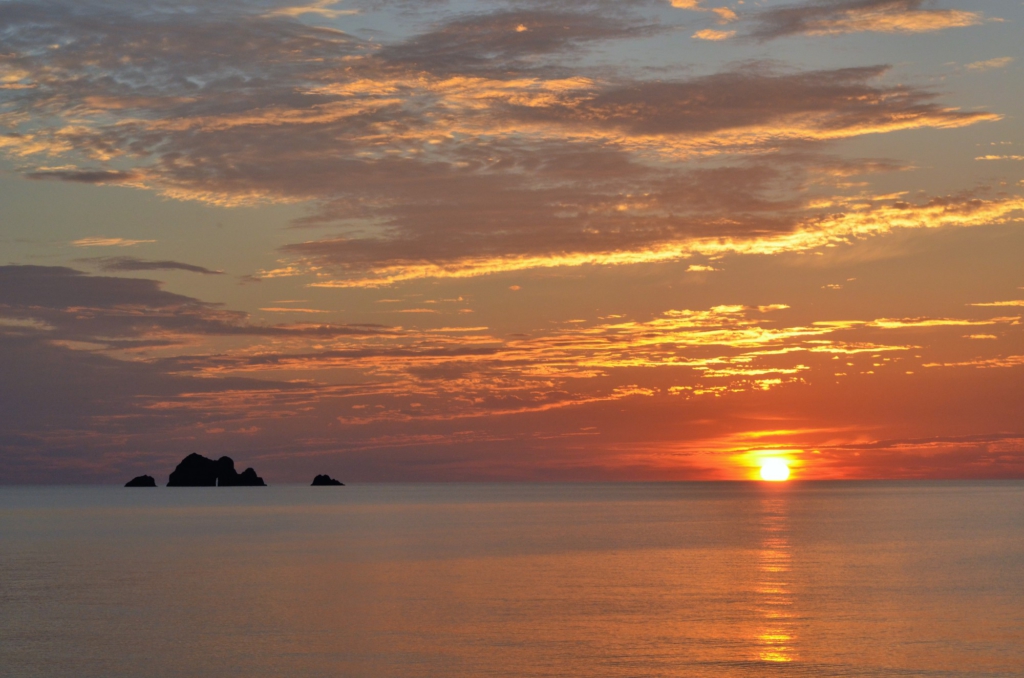
Shibayama Port, only a 10-minute drive from Kasumi, also yields year-round hauls of seafood from the rough Sea of Japan that are packed full of nutrients. The crab that Shibayama Port is known for is called “Matsuba gani,” and the top-quality, precious crabs are named “Shibayama gold,” showing how much pride the local fishermen take in their catches! These premium crabs catch higher and higher prices with each passing year, and you can try them at nearby shops and restaurants. Shibayama also features a topography that is unusual along the Sea of Japan, with a crooked coastline that attests to the skills of the local fishermen, and also offers stunning aquatic and geological scenery.
Karo Fishing Port is in northern Tottori, and is also known for its winter crab hauls. There are many shops and eateries located across the area, where you can indulge on generous servings of seafood and enjoy the charming atmosphere of a lesser-known village.
| Name | Shibayama Port |
| Address | 222, Okinoura, Kasumi-ku, Kami-cho, Mikata-gun, Hyogo 兵庫県美方郡香美町香住区沖浦222 Google Maps |
| Access | Follow the directions above to Kinosaki Onsen Station. Take the JR Sanin Line from Kinosaki Onsen Station to Shibayama Station (30 minutes). 15-minute walk from Shibayama Station. |
| Name | Kasumi Fishing Port |
| Address | 747, Wakamatsu, Kasumi-ku, Kami-cho, Mikata-gun, Hyogo 兵庫県美方郡香美町香住区若松747 Google Maps |
| Access | Follow the directions above to Kinosaki Onsen Station. Take the JR Sanin Line from Kinosaki Onsen Station to Kasumi Station (30 minutes). Kasumi Fishing Port is also a 6-minute ride on the JR Sanin Line from Shibayama Station. |
| Name | Yugyokan |
| Address | 748, Wakamatsu, Kasumi-ku, Kami-cho, Mikata-gun, Hyogo 兵庫県美方郡香美町香住区若松748 Google Maps |
| Closing Days | Tuesday, beginning and end of the year (12/31 – 1/5) *Hours of operation/closing times may differ depending on coronavirus situation |
| Name | Karo Port |
| Address | Karo-cho, Tottori-shi, Tottori 鳥取県鳥取市賀露町 Google Maps |
| Access | Take the Super Hakuto Limited Express from Osaka or Kyoto Station to Tottori Station. 20-minute taxi ride from Tottori Station |
6. Uradome Coast (Tottori) – View Fascinating Rock Formations on Azure Waters
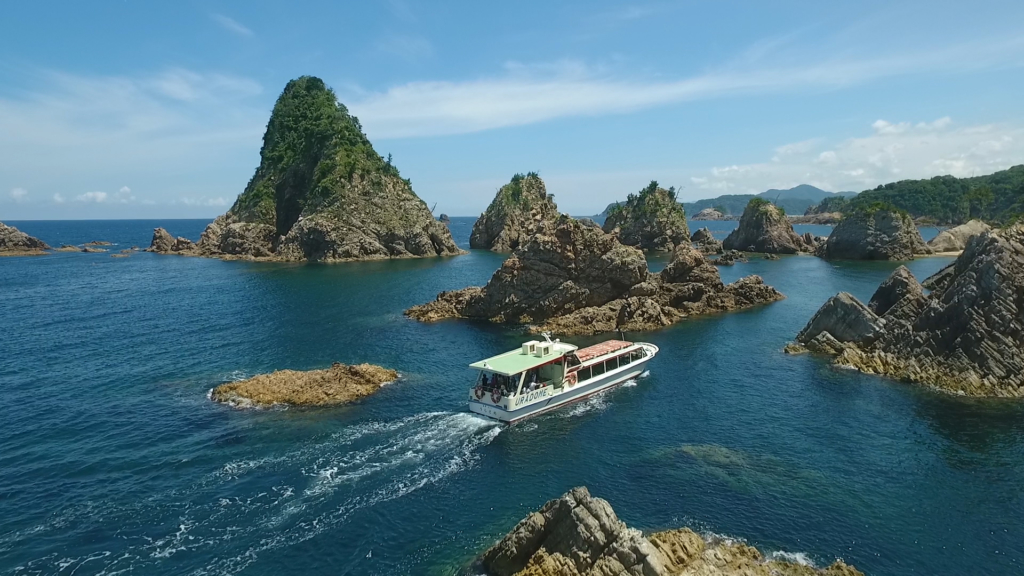
The Uradome Coast is a scenic spot in Tottori Prefecture that has attained its fascinating topography by erosion from rough waves of the Sea of Japan. The area includes many gorgeous natural features, including caverns, tunnels, and white-sand beaches, with the blue waters spreading out as far as the eye can see. You can see the waves crashing up against rock formations, giving a glimpse into the origins of the jagged edges.
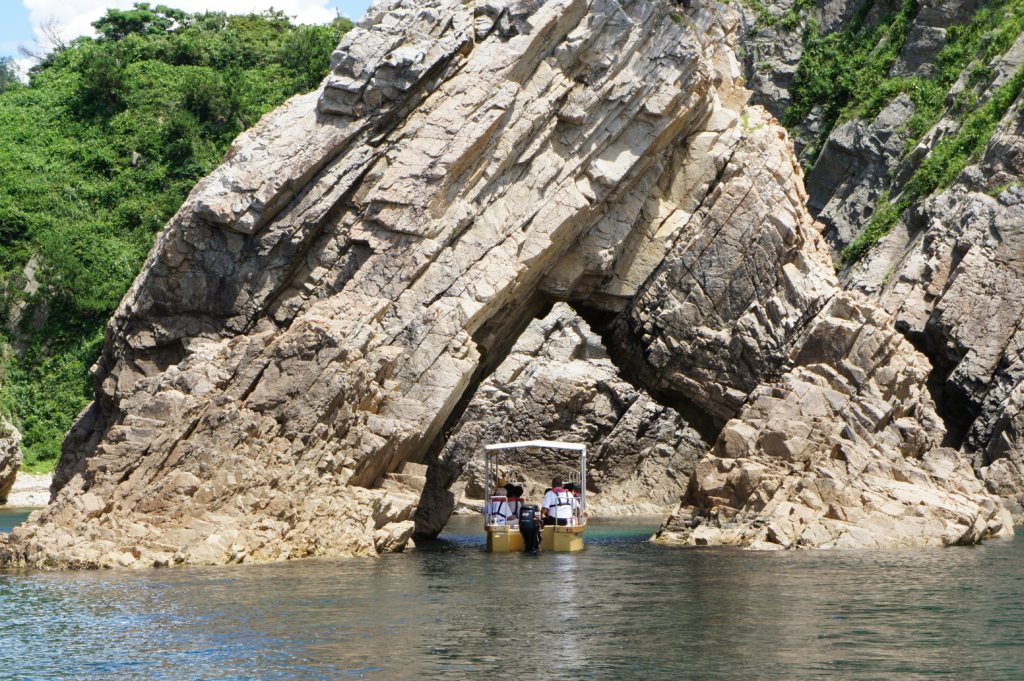
A walking path along the coast allows you to leisurely take in the wondrous rock formations decorated with vegetation. Walking or bicycling past the water are wonderful ways to take in the sights and feel the wind in your hair. The clear, azure waters can be observed from land, or explored by snorkeling! Boat tours are also available for those who wish to get a glimpse of these natural wonders up close. Spending time in the quiet nature away from hordes of people is quite the spiritual experience and a wonderful way to relax your mind and body.
| Name | Uradome Coast |
| Address | Uradome, Iwami-cho, Iwami-gun, Tottori 鳥取県岩美郡岩美町浦富 Google Maps |
| Access | Take the Super Hakuto Limited Express from Osaka or Kyoto Station to Tottori Station. Take the Iwami bus from Tottori Station to Uradome Kaigankuchi bus stop (45 minutes). |
7. Tottori Sand Dunes (Tottori) – Walk Through a Desert in Japan
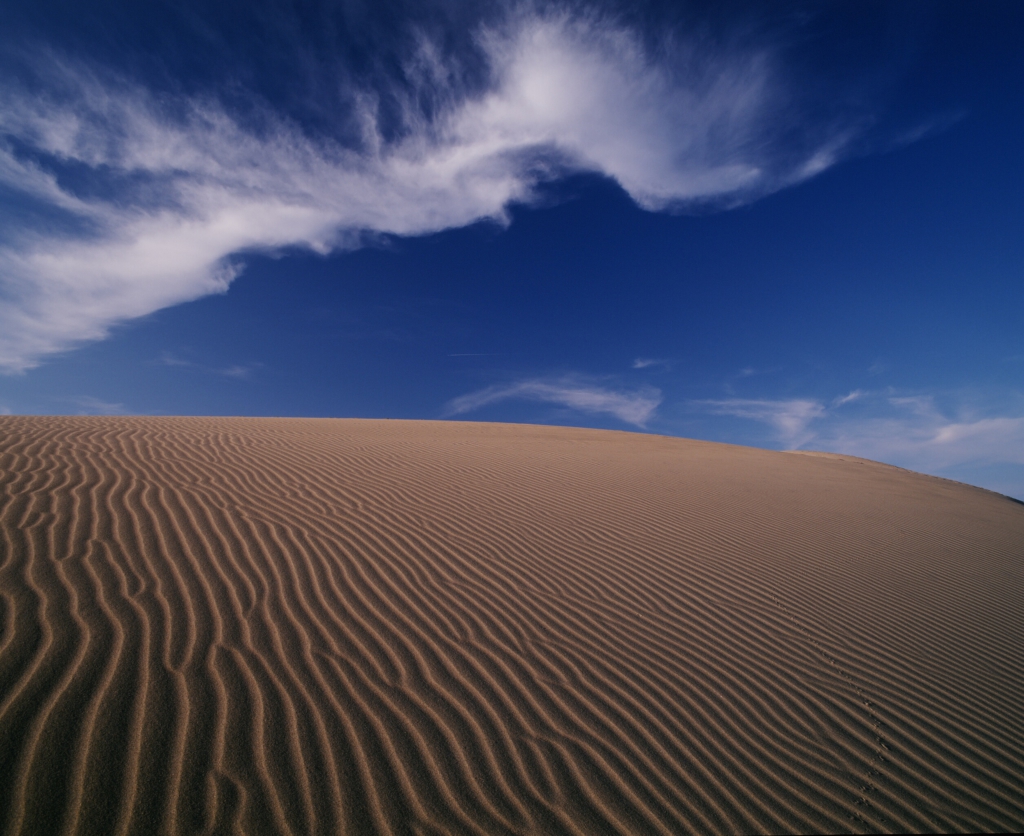
Although a natural phenomenon not commonly associated with Japan, Tottori Prefecture does indeed host large sand dunes that appear as an ocean of sand, and are also the prefecture’s most famous tourist attraction. The sand dunes stretch for approximately 16km, and are also located on the coast of the Sea of Japan, offering a rare view of a stretch of desert with a large body of water in the distance.
The sand dunes are not stagnant, as the tides and winds from the Sea of Japan are constantly shifting the sands, offering new landscapes. This is actually how the sand dunes were created over millennia, as sand from the Sendai River was washed out to sea and then redeposited on the coast.
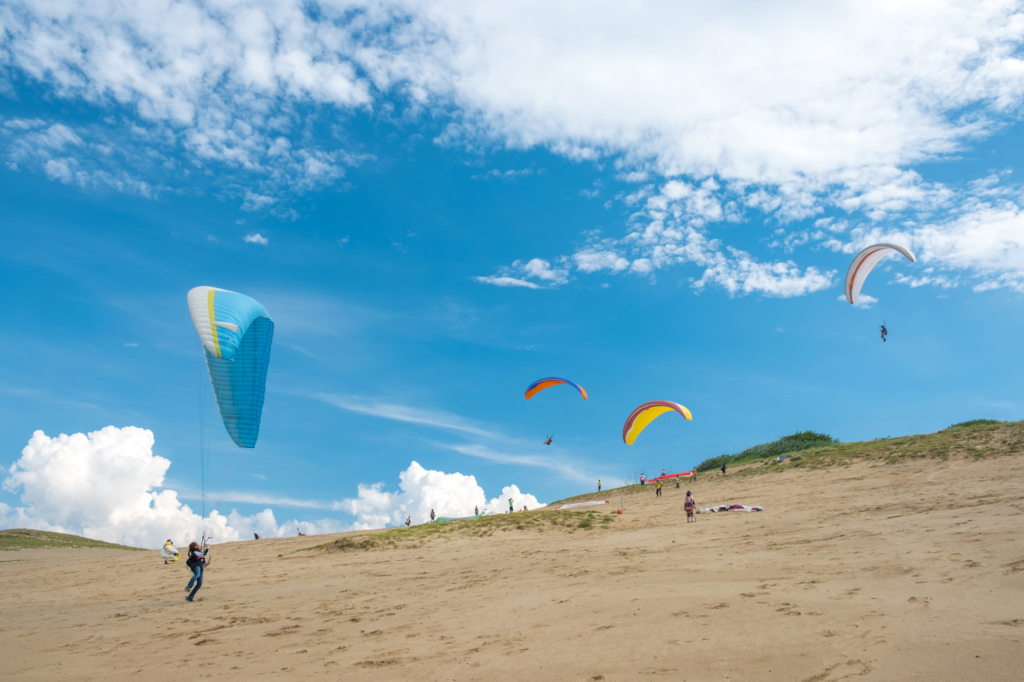
There are many ways to enjoy your time at the sand dunes, including taking a camel ride, enjoying an aerial ride while paragliding, cruising down the sandy slopes while sandboarding, soaking in the atmosphere through a yoga session, or just taking pictures that will astonish people on social media.
| Name | Tottori Sand Dunes |
| Address | 2164-661, Yuyama, Fukube-cho, Tottori-shi, Tottori 鳥取県鳥取市福部町湯山2164-661 Google Maps |
| Access | Take the Super Hakuto Limited Express from Osaka or Kyoto Station to Tottori Station. 20-minute bus ride from Tottori Station bound for Tottori Sakyu. |
Take in Phenomenal Japanese Scenery Along the Sea of Japan
The Sea of Japan is filled with iconic views and has heavily contributed to the wonderful cultures that have prospered along the Kansai region. If you are looking to take a scenic trip among quintessentially Japanese spots that have yet to be discovered by tourists, be sure to explore all the coast along the Sea of Japan has to offer!
Aside from the Tojinbo cliffs, all the other locations that are introduced in this article are located off the Japan National Route 178, so these can be explored during a road trip or individually if there are any specific ones that particularly catch your eye!
The Kansai region is filled with all sorts of fascinating locations! Check out these links to find out everything the area has to offer:


If you want to give feedback on any of our articles, you have an idea that you’d really like to see come to life, or you just have a question on Japan, hit us up on our Facebook!
The information in this article is accurate at the time of publication.
